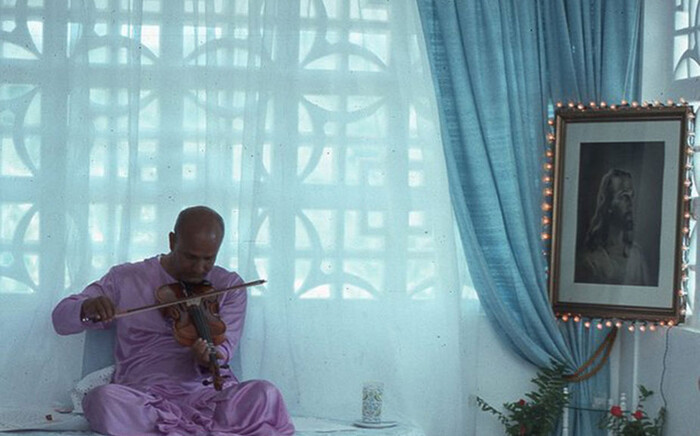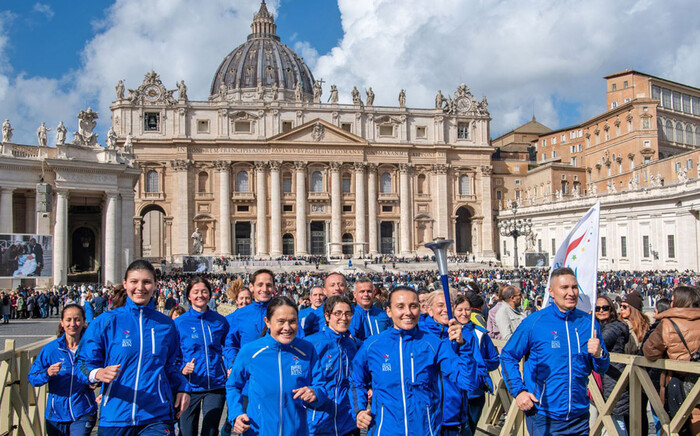
Inspiration-Letters 7
Dear Reader,
 The first time I ran a marathon, back in ’02, I discovered something special at, and after, mile 19. Pain is real. Yes, it’s real, it’s undeniable, and no amount of Forrest Gumpian gumption and can-do will can make it go away. So I played a game. I started running backwards, I started skipping and singing silly songs to myself and laughing at the birds and the deer as they came to watch and possibly laugh at me.
The first time I ran a marathon, back in ’02, I discovered something special at, and after, mile 19. Pain is real. Yes, it’s real, it’s undeniable, and no amount of Forrest Gumpian gumption and can-do will can make it go away. So I played a game. I started running backwards, I started skipping and singing silly songs to myself and laughing at the birds and the deer as they came to watch and possibly laugh at me.
But I wanted to finish and so like countless millions of people before me who have hit the Wall, I just gritted my teeth and sang to myself and I did finish.
That was almost five years ago, and I’ve run a marathon practically every year since then. I run each one slightly slower than the previous one. But I’ve learned a few things:
- The discipline, the training and the effort that we put into anything can never be wasted. I’ll never qualify for Boston but so what? I think I get more from my weekly practice runs than I’ve ever gotten from any single race. Remember, fellow slow-pokes, we’re running a good sight faster than the people who never risked showing up at the starting line in the first place.
- While running a race, don’t worry about your finishing time. But you still have to do everything you can to finish as fast as you can! I remember one year I ran the Philadelphia Marathon. I hadn’t trained much, so I thought that I would just enjoy the beautiful scenery and not worry about my time. But after a few hours, I didn’t care about the damn scenery anymore. I just wanted to finish. I focused from that second on covering each mile as quickly as I could, and I enjoyed the last few hours more than the time I had spent “sightseeing”.
- Running can help you meditate better and be more peaceful. When I compare the regularity with which I meditate now, with how I used to meditate before I started running seriously, there’s just no contest. I often have wonderful experiences of being at one with nature, with the sun and the earth, when I run. It’s a simple activity which connects so perfectly with the central metaphor of the spiritual life: seeker-runners running tirelessly towards that distant shore of peace, satisfaction and fulfillment.
Please enjoy these remarkable Letters from our worldwide family of explorers, athletes and adventurers. May they inspire you to go beyond the boundaries of the known and the mundane, and to shake hands with impossibility’s glowing dreams.
Here's a poem on running by Sri Chinmoy, who has inspired many people to accept life's challenges with courage and enthusiasm:THE RUNNER IN ME
In the inner life,
Hope is good
for the beginner runner in me,
Certainty is good
for the expert runner in me,
Triumph is good
for the champion runner in me.
By Sri Chinmoy
From Transcendence Perfection

A very warm welcome to our 7th issue!
Mahiruha Klein
Editor
Title photograph 'Jade' by Pavitrata Taylor
Whether it is worth it or not, you only come to know long after you have already started the game...
Only when you have left everything behind... The last and lost roads where man-made means of conveyance can take you, the last pathways where diligent or hysteric four-legged porter friends would be able to step, the last marked and then unmarked paths, the last slopes where birds still venture up, the last heaps of stones only humans can struggle themselves up to before beginning an arduous trudge on cracking ice... the last somewhat secure solid ground below your feet. Yet later you will have left behind even the insecure grounds of snow with black hollow spaces opening in treacherous crevasses. Whatever comes afterwards still offers you some place for your ice axes and for the front spikes of your crampons. You are getting closer to the point.
You have to leave behind everything that has to do with horizontal in order to meet with horizon itself. The last few meters, the end of it will at last make you feel whether it was worth doing. When the exposed trackless route into the sky itself has taken its toll on your entire being, and the rarefied air hardly can quench your gasping lungs, when a nameless, discrete grace from beyond the veils of headache and muscle pain helps you higher and higher till your eyes reach to the same level as the ridge and when you get the first glimpse of all that is behind it, you will surely know that it's well worth it.
That is the most breath-taking moment maybe, already before you can plant both your feet on the summit, or sit on it as in a saddle. This is the moment when you first get to see what is on the other side, beyond the ridge-curtain. At first you see only summits emerging above the facing valleys, then entire mountain ranges before the totality of a valley or rather of a huge gap reveals itself beneath you. This is the precious moment you are initiated in views the other side can offer, a sheer quarter second before you instinctively prevent yourself from stepping further out on the edge. Oh, yes, watch out as it may only be a brim of blank snow that may break down below your weight and may take you into the void... If you have consciously lived a moment like this in its full intensity, you know that the happiest moment of a climb and the moment of standing on the absolute top do not necessarily coincide even if they usually are connected.
It's worth the trouble, now you know. However, to accomplish the journey, you make the final ritual steps, until nothing more is above you. Here you may do the rest of your personal ceremonials, you may feel proud or lonesome, may smile or may cry, may be overconfident, may cherish self-contempt, may be grateful or forgetful, may be a hero copied from magazine covers or may be yourself...
"Here man can visit, but cannot live", writes Sri Aurobindo when talking about the higher regions, the worlds above our mind's understanding. So true, even in the physical and geographical sense, too. You are standing at the place you so much yearned for, you so much strove for. And your only reward is a drift of cold wind splashing icy crystals in your face. Eventually a piece of chunky chocolate or some lukewarm tea still left in the bottom of your thermos. In the very last case, a thought of God, with the slight hope that God is also thinking of you exactly at the same moment…

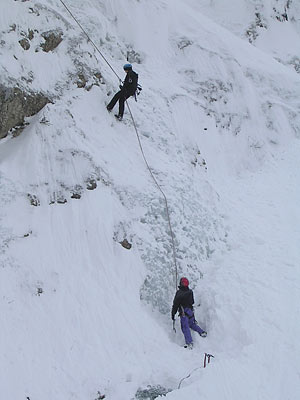
You are standing at the place that once became your goal, your motivation, your reason of struggling, your driving force, your obsession... And you are only halfway! The same arduous way is again ahead of you, you ought to get down where you started from. Down. Well, that's where you really belong to. The realm you can inalienably claim as yours is down there, love it or not. It is for them, and for your tiny self down there that you are doing all this, you better admit this. It is not for some whimsy gods dwelling on imaginary or real ridges of the inaccessible space that you are pushing yourself on and on, groping for the limits of your endurance. It is for the sake of all that is down there and for someone who craves within you to know what is it like, up here, in a realm seemingly ever inaccessible for the common mortal.
You are only halfway! You have to get down, back to the dreams that implemented themselves in and through you. You have to go down again, to dream new dreams and to unfold the fulfilled ones to onlookers. You have to share the gift divine. Yet, you cannot bring them snowflakes, neither pebble... What will you take from the ridge where you met the sky close up?
Take them the sky itself. It is living in your eyes now, once you tasted its vastness, it never leaves your regard. Once you had a mouthful of infinity, its taste will permeate every wish of yours. Once you walked high above the clouds, it is the unfathomable blue depth of space that will make your heart its abode. Share this with those down there. Take care, you are only halfway... But you have the entire sky in you to confirm that it was worth striving.
Kamalika Györgyjakab
Luxembourg
The word "adventure" conjures up images of the African Serengeti or the Amazon rainforest. I am fortunate to have had my share of such adventures—pogo stick jumping in Antarctica and juggling underwater with sharks in an aquarium in Malaysia, to name a few. But adventures don't necessarily have to be in exotic places. With the right attitude, you can have an adventure in your own backyard or, as in this case, at a nearby zoo!
I do like to find an appropriate backdrop for my record attempts. It's part of the fun, but at the end of last year (2006) I was extremely busy with work and couldn't spare the time to go to a faraway place. I wanted to attempt two records –the first…juggling three balls for the most number of catches while hanging upside down; and, the second…crawling the fastest mile. One of my friends suggested the Beardsley Zoo in Connecticut, which is less than two hours away from my house. I'm an animal lover, and it sounded like a lot of fun, so my friends and I piled into a car and visited the charming zoo.
I found a flat course on grass for the crawling mile, but I really got excited when I saw the tiger cage. On the outside of the cage was a post from which I could attach a bar to hang and juggle. I think the tiger liked the idea because when I approached the cage, he came to the fence and stood up on his hind legs. "Wow", I thought, "either this guy really likes me or else he's thinking what a tasty meal I would make!"
Of course, I still needed permission which is often not immediately forthcoming from the authorities. Fortunately, the zoo management couldn't have been more encouraging (about the record attempts, not about the tiger eating me!) and we set up a date for the following week.
On the appointed day, I decided to do the juggling record first. The tiger cage drew quite a crowd of the usual zoo-visiting kids and parents, but the record attempt brought some reporters as well. I was pretty nervous because upside down juggling requires intense concentration, and I was concerned that all the people might divert my attention.
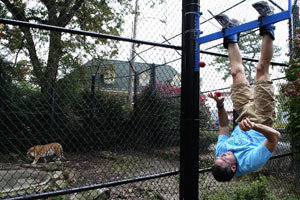
I hopped up onto the bar, focused and began my record attempt. I had not anticipated all the noise from the watchers. Even the tiger seemed put off by all the commotion as he retreated to the far corner of his cage! Concentration was difficult and at about 150 catches, one of the balls fell to the ground. Ugh. To perform this record, you hang by your ankles and bend your torso up to toss the balls skyward. The record at 197 continuous catches doesn't sound like much, but after a short time your abs fatigue and ache, and your throws tend to become erratic. It takes unwavering concentration to keep the balls from flying out of reach.
I was concerned because the stress on the abs is such that you can only make a couple of attempts before your abs turn totally to jelly. I rested a few minutes and tried a second time, but again, I came up short. My adventure was becoming an adventure in embarrassment!

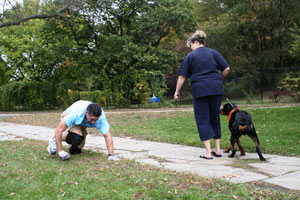
I announced to the disappointed crowd that I might try again after the crawling record depending on how I felt. However, I knew from experience, that a third juggling attempt was unlikely because the crawling record is also very ab intensive. If anything, my already fatigued stomach muscles would be in even worse shape after crawling for a mile.
Anyway, I knew I needed "inner recovery" from my failed attempts so I meditated for a minute on my spiritual teacher, Sri Chinmoy. I was suddenly flooded with energy! I approached the starting line of the crawling mile determined not to fail. At the starter's "Go!" I became a crawling fool! The timers announced my split times in disbelief. I was so concentrated that I didn't even notice a dog on the course who seemed to be perplexed by this unrecognized four-legged creature huffing and puffing towards him!
My time for the mile was 24 minutes 44 seconds, more than 4½ minutes better than the previous record! My abs were sore, but fortunately my inner focus from my meditation was still with me and I was eager to try the juggling record again. The television reporter could see that I was tired and told me it wasn't necessary to try again because he already had a good story. I thanked him for his concern, but explained that this wasn't about the show—it was about the challenge!
I waved to the tiger, struggled up onto the bar on his cage, and began juggling. It was amazing…everything became effortless. I was able to manage 251 catches and, when I landed back on terra firma, I surprised myself by letting out a resounding whoop. Across the zoo, visitors must have wondered at this new and strange call…the call of the joyful, juggling, crawling, homo crazylius, who just had a wonderful adventure in self-transcendence at his local zoo!
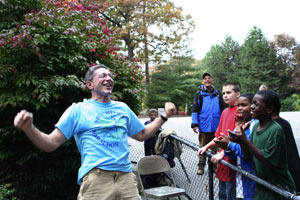
Ashrita Furman
New York, USA
Christmas Day 2003. Anticipation tingled brightly in every cell as the white landscape underneath rolled by. Snow laden tops of pine trees solemnly passed by, my down turned ski tips pointing towards them. The occasional buzz of the gondola passing through the wheels of the big concrete poles dotting the slopes like big, lonely sentries was the only sound to be heard in this muffled and still white world.
The peaceful ride upwards is disturbed by a short moment of anxiety as the chair lift approaches the landing. Descending from the lift the first time is always a bit scary, like learning how to walk again. It's been well over a year since I last ventured out to ski. But once out on the slopes and inhaling the oxygen-rich air, so welcome to my city-bound, pollution prone nostrils, I wouldn't want to trade places for all the gold in the world. I'm in Squaw Valley USA, home of the 1960 Winter Olympics, a beautiful mountain range in California overlooking Lake Tahoe. It's a cloudy day, which makes for small discomfort since gauging the slopes becomes more difficult with sky and earth blending into the same whitish grey. But now is not the time to brood over small discomforts. Now is the time to live life to the fullest. I skate-ski my way towards the slope and let my body weight pull me down towards the freedom below. Ah...
Nothing is as blissful as that first descent! First of all for the memories it brings back of all those snow-filled joyful days with their tired, satisfied evenings from a carefree past. Back in the present: the omnipresent fragrance of the pine trees mixing with the purity of the mountain air, the pleasant, rhythmic sound of snow crunching against skis and the freedom of the body sailing down the mountain... a draught of Heavenly nectar!
I go down the fairly easy blue slope three times. Not a highly talented skier—what would one expect from someone born in a country devoid of mountains?—I enjoy the leisurely winding slopes far more than the frightening slants of the red or black category. Why invite teeming anxieties and bold fears when one can enjoy gliding down the mountainside untrammeled, unchallenged, without a care in the world?
Yet, alas, my male hormones decided to rear their ugly heads. Goaded by my Australian companion for the day, a highly talented skier loving a challenge, I see myself taking the turn towards the red slope – quite unprepared and much too early in the day. I should have trusted that little voice inside me that was yelling at me earlier, but his shouts proved no match for my overconfident ego's booming voice. Of course I can handle a red slope! I've skied red and black plenty of times before, haven't I? Yes, but that was years ago, the little voice replied, but his point was drowned in an adrenaline rush. My first and last of the day, as I would soon discover.
As I gaze down the slope I am acutely aware—as always that first time down a red or black slope—of the frightening steepness awaiting me. It didn't look that bad from the lift, I hear myself thinking. How can it be so steep all of a sudden? Perspective is a funny thing. I know it's too late for second thoughts and feel myself forced to surrender to the inevitable. From the corner of my eye I see the Australian take off in a flurry of snow, fearlessly belting down with giant, confident turns. Tension gnaws at my legs and knees as I carefully let myself glide down, making my first awkward, wooden turns. Heavens, it really is steep!
Relax, I tell myself. Just concentrate and relax. No fear, no fear, no fear. The mountain tells me something different, though. After my fourth or fifth turn I momentarily lose control. In a panicked effort to regain it I make a forced turn and feel my skis gliding away underneath me. With a hard thud my back collides with the thick layer of snow. Just when I hit the ground I feel a strange twang in my right shoulder. Then I lie still. Nothing seems to hurt, so I should be all right. I try to get up, but somehow can‘t. My right arm doesn't seem to cooperate. It juts out to my right in a weird angle. Strange, as I feel no pain. Unable to move I just lie there for a minute or so. A skier passes me, glances down at me and abruptly brakes.
'Are you all right? a woman's voice calls out to me.
'Yeah, I'm fine, but I can't really get up.' She comes ski-walking back up towards me and looks me over.
'Are you sure you're okay?' she asks.
I tell her I feel fine, but can't seem to move my arm. She says she saw a ski guard coming this way and says she will await his arrival.


'Where are you from?' she asks, having noticed my accent.
'I'm from Holland, but I'm working in a restaurant in San Francisco.'
'Oh, really? Which restaurant is it?'
'Well, it's a spiritual restaurant. The people working there all practice meditation.' I don't know why I said that, really. Not a particularly useful piece of information under the present circumstances. Her reply was even funnier, although utterly heartfelt and sincere.
'Well, would you like me to leave you alone so you can meditate?'
'No, no, not at all' I retorted somewhat embarrassed. Meditation is about the last thing on my mind at this moment. The things one can say when the brain cells are busy elsewhere, tending a dislocated shoulder. Moments later the mountain guard arrives. He takes one look at my right arm, asks me if it hurts much and skis off again to get reinforcements. In the meantime my Australian friend has arrived at the scene with a slightly guilty conscience. I try to comfort him by taking the blame wholly unto myself, which is of course where the blame belongs.
I finally do make it down the red slope, but I hadn't really expected to do so in a sled piloted by a skier with an emergency cross on his jacket. Ah, so it does hurt, I realize at every little bump we glide over. The pain has finally found its way to my brain. The next thing I know I am lying bare-chested on a stretcher in the doctor's office at the base of the mountain. Getting my five of six layers of protective clothing off was a painful ordeal, but somehow we managed. I try a casual glance to my right and immediately jerk back my head in horror. My arm looks like it has been screwed onto my torso by a really bad mechanic. The doctor himself is a confident and kind-hearted middle aged man, who has obviously seen hundreds if not thousands of these cases. He smiles and says ‘This may hurt a little,' (don't you just love that phrase) as he grabs my arm and gently pulls it out and back in a semi-circle. Click, my shoulder says and painlessly falls into place. It feels like a long lost relative has finally come home. Thank you God, I whisper as the anticipated pain remains absent.I suddenly feel a tremendous sense of gratitude towards the medical science and all its practitioners. In moments like these I realize they are truly indispensable on our earth-planet. Maybe we could do without plumbers, bus drivers, lawyers, shopkeepers and librarians, but we couldn't possibly survive without doctors. I kind of feel sorry for my two friends for spoiling their day of skiing, but I can't help smiling and feeling cheerful. I try to take the accident as an experience—just that, an experience—and try to look at the bright side of the matter.
In the spiritual life it is said that an accident can make you more aware of God's Presence and Compassion in your life. That is why in the Indian scriptures Arjuna's mother Kunti prays to Lord Krishna to give her constant sorrow, because she would be inclined to think of Him more in misery than in joy. An interesting point of view—not one I would adopt personally, but through my experience I did feel a great amount of Compassion descending from Above. So I can understand Kunti's reasoning. Still I do feel that life is ultimately meant for joy and that ski slopes are ultimately meant to glide down from unharmed.
Abhinabha Tangerman
The Hague, The Netherlands
What an irresistible word ‘extreme' is with its romantic notions of a life hard lived, and how we devour books and stories of those living by this alluring credo, trudging to the Poles—stubbled with heroic hardship—crossing the last great wildernesses by dog-sled, rocketing out into the stars. That last especially fascinates, the umbilical chord of gravity broken, peering back at the living miracle of earth, one hour away and already homesick, feeling the loneliness of that sudden inhuman dislocation from all of our evolution. In Time magazine once a portrait of astronaut Neil Armstrong upon his first return to planet Earth, face down and weeping in a green meadow—no wonder!
My grandfather was an extremely accomplished boxer, but those family genes diluted down through the clan lineage into dentistry and gardening and only in a rare and random dream does that wild impulse come to visit the grandson, the clang of the bell and the roaring crowd only rampant in the imagination, in a nightmare's arena of pummeled flesh, waking with beaded brow and clenched fists, grandfather's ghost grinning at my bedside—attaboy! Thank God for evolution.
Only once, a playful sparring under the tutelage of my opponent's father did a fist come crashing, sending me backwards onto the grass with stars whirling in my adolescent brain, just the way they said it does. Now only in my frequent altercations with the local parking warden, do the old genes of war come—I walk away from each encounter a little uneasy and nonplussed at so easy a descent into battle.
As a kid I enjoyed the simple dispensation of righteousness in westerns and a certain nostalgia for those quick, if violent and extreme, solutions still remains:
"You're a no-account two bit rustler Big Jake. This here town ain't big enough for the two of us. Fill your hand or saddle up and ride – want ya outa Dodge by sundown!"
"Reckin you're aimin' for a one way ticket to boot hill mister, ‘cos no one prods Big Jake."
"Why you lily-livered, yeller, low down skunk, I'm gonna fill your no-good hide with lead!"
"Yah talk real purty sheriff but I reckin you're gonna be buzzard bait afore long. Ride yisself – or grab leather."
Aaah yes! we didn't have to take a shower twice a day then either.
Here's some personal reflections on various extreme sporting adventures that I'd like to share:
Most extreme spectator challenge: watching the 3100 mile race! Standing there lamely calling out "Way to go!" to these sporting phenomena covering 98kms a day for 51 consecutive days in the middle of a New York summer makes you feel crushingly foolish and can leave a lifelong inferiority complex. Getting involved in massage, food prep or lap counting gives you a certain vicarious glory, or join a singing group, but straight spectating is a daunting challenge – the gulf between your mild world and their epic journey is too great. You stand there and call out "Looking good!" or "Only 1100 miles to go—yay!" as someone shuffles by after 2000 miles of shin splints and blisters—best thing is clap softly and look sympathetic, but say nothing!
Most dreaded extreme sport: In New Zealand in 2002, Sri Chinmoy consented to our going skydiving—in Taupo I made sure I was too busy, but in Christchurch a friend gallantly offered to pay and I was caught. I trawled through an inventory of excuses honed through years of avoidance – hiatus hernia/migraine/aunt crushed by a runaway bus/hugely important manifestation project/sudden loss of vision—but then Guru passed me in the lobby and enquired "You'll jump out of the plane today?" Now a strange calm descended. Fate had decreed I must jump and I meekly replied "Yes Guru".
A sleepless night, haunted by imagining: two selves, I and doppelganger, one peering up into the vault of afternoon sky at the tiny black dot of other self plunging earthward, tumbling, twirling but as though in slow motion, struggling to open the malfunctioning chute, the plane a grey moth banking away east into cloud, cargo plummeting to earth like a tiny meteorite.
But some God of extreme sports must have felt my turmoil and responded, for that afternoon, anxious mind already free-falling into catatonia, some devastating news for all intending jumpees—too windy! (yippee!) We all met, miserable and crestfallen to console ourselves in the local café, tossing down frappucinos in mutual commiseration, for next day we were leaving for Australia, I struggling to mask my glee and insisting on buying everyone a last consolatory round.
Privately in my diary that night a few lines of poetry:
I think it's just inane
to jump out of a plane
if things go wrong—insane!
and contemplate the pain!
(you'd never be the same)
all twisted, scarred and lame!
rather fall under a train!
I really will not deign
to leap out of a plane.
(This made me feel better.)

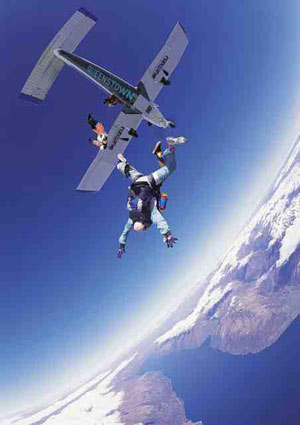
All-time silliest sport: Sorry golfers, but I've given a lot of thought to this and even rolling a boulder up a hill over and over throughout eternity like Sisyphus pales into insignificance compared to bashing a silly little ball into a hole with a stick—not to mention the prudish Victorian protocols of dress and proper etiquette plus the almost Faustian surrender of one's common sense, humour and reason. You can't even have golf-buggy races amidst all those inviting, manicured green acres, which could be so much fun.
But a fun variant of this foolish game is possible in the right company – speed golf! Who can get the ball into the hole the fastest?—you rush up to your ball, give it a belt, chase after it, whack it again, kicking your opponents ball away or stomping it deeper into the ground with your heel if you reach it first. Alas, in one game of extreme golf my good friend Snatak—who plays this in Iceland a lot to stay snug and warm—actually pursued me with a ‘wood' (ie. non-iron club), a seldom invoked Nordic custom, but let's not say anything more about that regrettable lapse into savagery. Don't expect to play speed golf at your local club—you'll be disbarred, even dismembered, shackled to four golf buggies driven off in different directions by outraged purists.
Most dangerous disciple sport: Frisbee with everyone's friend Databir—I've personally endured three broken ribs, one dislocated and now malformed finger, seven times a twisted ankle, multiple severe bruising, lacerations and colourful blue contusions, two broken front teeth, multiple torn hamstrings and hair loss through anxiety. Extreme fun though! These injuries usually occur on our Christmas vacations which is ideal because Asian dentists and chiropractors are much cheaper and Asian taxis are also quite inexpensive (you ride everywhere because you're in too much pain to walk).
Life's most intense moments are often windows into our greatest insights and feelings and I have often lain on a foreign frisbee field, mildly concussed or wrapping ice around some freshly ruptured body part, reflecting on certain existential questions.
Adventures and extreme sports and living on the knife edge are also great antidotes to the carefully insulated lives we mostly lead, traveling safely back and forward along the predictable tram lines of the ordinary and the humdrum, shut away in a world of press-button comfort and artifice that shields us from all but the most ineluctable realities, especially the reality that questions why we are actually here.
Ah grandfather! The only truly extreme adventure is the Extreme Adventure that all of life is a catchment for, meandering down the long unravelling of years towards the great emancipation at the end of all striving, the Destination that vindicates and validates all journeying. You might have known this, bloody in the ring, the impulse of your fists not only of conquest or dignity or self-worth but to fly above the painfulness of flesh in the knowing of another genesis, Self-birth, a parturition's blood, rising triumphant out of the fire and clangour of the boxing ring like a great Phoenix and flying away to some better unembittered place, yes some other lovely place of spirit.

Jogyata Dallas
Auckland, New Zealand
The name John Landy might have been one of the proverbial ‘household names'—the first man in the history of humanity to run one mile in less than four minutes. It was, of course, Roger Bannister who in fact attained that preeminent position. John Landy was six weeks too late to be the first, but during the time leading up to Bannister's achievement on May 6, 1954 it was not clear which runner would take the laurel.
For long it was believed that nobody would—that it was actually physically impossible for the human body to attain such speed. But a small group of men dedicated themselves to challenging that barrier. They were seemingly attempting the impossible.
John Landy learned from Percy Cerutty and from men like Emil Zatopek and from his own experience that there was only one way to improve—to train longer, to train more, to train harder. He committed himself to a gruelling training programme designed to render running close to a four minute mile easy for him. And he succeeded.
Landy was, like Bannister, one of that vanished breed—the athlete of the highest order, the world record breaker who was purely an amateur. He ran to be the best he could, and in the true spirit of amateurism he ran for love—‘amateur' from the Latin ‘amator': lover, from ‘amare': to love.
And John Landy loved to run, and he ran with dedication and commitment and passion and he broke Bannister's 3 minutes 59.4 seconds six weeks after Bannister set it with a 3 minutes 57.9 seconds, but, oddly enough, running was not his chief passion. It is what he is remembered for, it is what he will always retain a place in the hall of immortal athletes for, but his passion was—butterfly collecting.

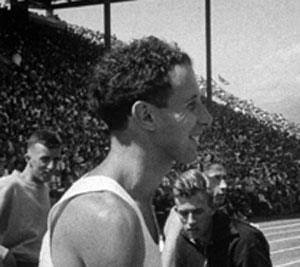
When not running down a track faster that any man who had ever existed had run, John Landy was drifting through the Australian countryside with a butterfly net.
Butterfly collecting: a 'blood sport' you might say, but surely one of the more delicate ones. A sport that combines the thrill of the chase with a fine feeling for order and systematisation and classification and an appreciation for beauty.
Record-breaking athlete: butterfly collector—surely the extremes of sport.
Barney McBryde
Auckland, New Zealand
My life begins with a taste for adventure. Three months to the day premature, October birth instead of January—beginning of spring rather than mid-summer, a more adventurous, extreme entry to this world harder to imagine, on bungy or umbilical cord.
Born in Dunedin, New Zealand, city furthest south of pretty much everywhere, most especially Edinburgh, of which it is an almost stone by stone replica, I was lucky enough to make my unscheduled landing in the maternal unit of the nation's only medical college, advanced premature care a rarity elsewhere. Premature births to this degree are rare, but surviving them was even rarer in the early 1970s, and my first several months were spent not in mother's arms but plastic incubator, continued participation in life's game less than assured—or even expected. My mother, when not praying for my life chose for me the name John-Paul. Four years before first papal namesake, its meaning is "gracious gift of God." It was an invocation of Providence for my continued participation in the adventure of life.
I owe my Mother much for this invocation, for God chose not to withdraw me from life's game at this early stage, the sincere supplication of sideline supporters His hand stayed. Thus, my adventure begins...
***
As a child adventure means playing, the most serious duty of childhood to be pursued at any and every moment. Life ceases to be fun when play ceases—children know this truth inherently. The universal secret of childhood is to seek fun and adventure wherever and whenever you may find it. It is a truth for adults as well.
At age four adventure was dressing as a cowboy, red hat, waistcoat and badge, best of all proudly holstered silver gun firing "caps", miniature charges of gunpowder the terror of a quarter-arce section, family cat as well.
Or assembling train set acquired via childhood charm from legion of doting relatives—I the first grandchild and nephew of two Catholic families, eighteen siblings between. Tracks would be laid at any opportunity, connecting kitchen to living room or my bedroom in between, epic cross-country journeys embarked by engine and carriage, imagination painting passengers and scenery.
A train ran maybe a hundred metres below our house, a five minute tunnel ride beneath outer suburban hills to towns beyond. Days spent reading and rereading books on cars, planes and trains, I would lie in bed at night listening for signs of its passage, adventure furthered to all hours in the imagination.
Lego became my best-friend to adventure—not "house" lego, so called by young chauvinists, lego of domesticity "meant only for little girls", but "space" lego, the closest this deliberately pacifist plaything came to providing the means of warfare we young militarists desired. Battleships, space cruisers and fighter jets were constructed and reconstructed to ever more refined, complicated heights, friends and I on adventurous quest to create ever better vehicles of the imagination.
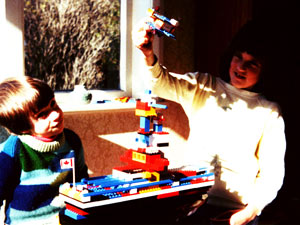
As an only child imagination was my brother and we played together often. I didn't have imaginary friends—of practical as well as imaginative bent, my childhood self would have said "how can you talk to someone who isn't there?"—but nevertheless I would talk to myself when engaged in playful activity, an exuberant monologue puzzling to parent but joyful to own ear, running commentary of whatever I was doing expressed out loud, even when no one was there.
Adventure wasn't all toys and Christmas and birthday excitement—it grew wild in the world around, awaiting discovery via curiosity and invention. Climbing trees was as much fun as television—and far more dangerous. Searching for a new hiding place in a property you knew backwards, but just maybe had missed. Attempting for the longest while, futilely but joyfully, to create a working bow and arrow out of ordinary stick and twine.
Adventure could be found inside house as well, waking at night in silence and moonlight, creeping on toes into living room as though still in a dream, across shadows cast through blinds, trees swaying through window, gazing open-mouthed and breathless beyond branches, infinite black sky beyond. Mystery and imagination were two brothers, majestic star-lit night sky father to all. What was up there, and how vast was it all!
My sense of adventure was stirred in moments like this. Life held a powerful mystery; meaning and purpose could be felt so strongly, but not stated, explanation just beyond tip of tongue.
***
My mother once called me into the living room at night. The lights were turned off so she could see outside, to distant hills and sky beyond.
"Look over there, over the hill. No, up there, up in the sky"
I followed her finger upward, over the hills to the stars above. There was a light in the sky, not bright but distinct, motionless, as if hovering in mid-air.
"It's been there for a while, still, but it was moving before. It might be a UFO."
We watched together for a long time as this light hovered, then moved to and fro. I was utterly captivated by the simultaneous mystery and excitement of it all—a real life adventure better than any I could possibly imagine.
"What an adventure!" I exclaimed.
I would quite happily have been abducted by aliens from this point. Should I have proved interesting enough candidate, any temporary loss of freedom was more than worth a first-hand glance at the mystery of other worlds, sentimentality for home and friends no match for this child's yearning for adventure.
***
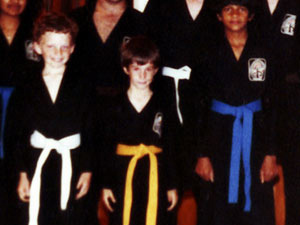
My best friend was unable to take more than one visit a week to his house, possibly because I was a pent-up storm of energy and enthusiasm whenever I was there. More likely though it was his mother's doing, driven to distraction and limit by two barely containable young cohorts in mayhem and adventure.
Afternoon adventure began at approximately 3:20pm, as quickly as we could get to his house from school. Soccer ball or cricket bat hurriedly grabbed, choice dependent on season, we would launch into an every minute treasured volley of shots, saves and scores, until 5:00pm, dinner time for friend, and my cue to trundle sullenly home like leash bound canine, next week's adventure unimaginably far away.
Another friend found a tunnel in his backyard once, immediately the most important mystery and adventure of the moment. Probably a long forgotten plumbing trench, it ran for fifty metres or more beneath neighbouring houses and beyond, about a metre below the surface and half a metre high. We only managed to explore it once—ever suspicious parents and "Deniers of Adventure" caught us in the act, fathers dispatched to fill it in. Future adventures would have to take place out of sight of their ever vigilant eyes.
***
Adventure wasn't all outdoors, in sporting activity or daring play. An avid reader, I would bring home as many books as mother and I could carry, fortnightly visits to city library saw any and all tales of fact or fiction acquired then devoured by voracious imagination. Adventures in misty English moors, moonlit coves and mysterious castles were delivered via Enid Blyton, first of many authors whose works I pursued with enthusiasm and single-minded determination—now hopelessly addicted to their craft's enhancement of, rather than escape from reality. I really did read beneath the covers at night by torch-light—to oft ignored warnings of damaged eyesight now born out. At times on a burst of inspiration I would attempt to write my own masterpiece, usually abandoned in enormous frustration only several pages in, deeply upset at inability to write as well as authors admired. I had yet to learn that practise and persistence are necessary for almost everything in life—even adventure—talent present already or otherwise.

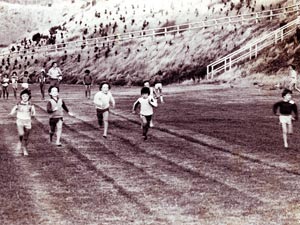
One book that held a special place in my heart was a picture Bible, given as a present on my seventh birthday. Simplified to the very essentials, drawn in the fashion of a contemporary comic, here were adventures of a different sort, and they struck a deep chord in a way that my occasional, very much forced, obligatory attendance of church didn't. Church, for me of the Anglican variety, consisted of an "It's so boring, do I have to go?" mother-baiting pre-ritual, counting the minutes slowly pass on a brand new digital wristwatch during, and afterwards wonder as to how an hour and a half "could take soooo long?"
Quite unlike dreary Church proper, here in the picture bible however were adventures of bravery and faith that I hoped one day I might be able to emulate. I marvelled at the story of Paul, a disciple of Jesus who heroically sacrificed his life for his faith, awe filled at such courage and bravery. Likewise the stories of Christians and lions, Abraham offering his son as sacrifice, and priests who stepped into an open furnace, remaining untouched. I actually had no idea how one could be so brave or strong, in faith or otherwise. A child afraid of visits to the doctor, such courage was beyond my comprehension. Yet I dreamed that one day it might not be. Imagine those adventures!
Children will always find a way to subvert adult activities to their own joy-necessity, and adventure could be going to Church as well. Dragged against will by weekly God faring mothers, a group of adventure-possessed delinquents dressed in Sunday-best staged epic dirt-clod wars behind hall and steeple, where adults gathered in the Spirit.
On occasion my mother succumbed to her own peace of mind rather than Peace of God, leaving son behind to watch televisions' Big League Soccer, a highlights programme from very distant English soccer leagues. The adventure continued at programmes' close, ball kicked against wall outside, over and over and over, mind lost in sights and sounds of games and heroes just watched, calls inside for lunch obliviously ignored.
***
While adventure up until this point in my life were mostly of the sort typical to any young boy—adventures of activity and imagination pursued with all breath and vigour at my command, here and there were a few notes hinting of another tune, a distant, somehow familiar but without context melody of other worlds, dimly heard on occasional pause or reflection but never retained, a hidden meaning and direction to life that I had yet to attain.
At the age of twelve such a moment occurred, a dream from nowhere of spiritual portent, portent which I could neither place or comprehend, even feel was deserved. I had just spent a month in England in a Christian community, headquarters of an international missionary organisation my mother spent the previous year working for, I living with father in Canada. One of the happiest times of my life, I returned home to New Zealand with the firm, heart-felt conviction to do something for the world, although what that would be I had no idea. Alongside still distant dreams of an adventurous adulthood as perhaps lawyer, sportsman, artist or musician, a spiritual longing and aspiration for adventure of a different sort was taking birth.
The dream was of a most beautiful girl, in her teens or later, with whom I travelled to a house where there was a gathering of people, a meeting perhaps. Seemingly invisible in the way only possible in a dream, the girl pointed to a small speck of white light in or above each, saying over and over, "This is the soul."
The girl? Although never a Catholic, with an overwhelming sense of love that I could not explain, I knew her to be the Mother Mary.
I mentioned the dream to my mother, but dubious reaction combined with my own puzzlement and confusion saw it filed under mystery, quickly forgotten. On reflection, it was a harbinger of a great adventure still a few years distant, the discovery of meditation in my late teens.
***
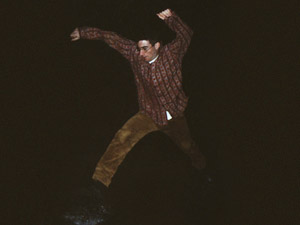
Adventure changed its meaning with the onset of young adulthood, much lamented death of childhood. I deeply resented the transition, understanding not its necessity, or how to relate to the chaotic teenaged world now within. The terms upon which I had long learned to meet the world—oft-cultivated, sometimes practised sincerity, kindness and truthfulness, as ingrained by mother and Bible story and felt intuitively by heart, now mattered nought, and I was at a loss to fathom the new terms—at best sophistication and confidence, worst aggression, arrogance and haughtiness—upon which adventure was now defined.
Adventure was still sought in games, in Saturday sporting contests keenly anticipated all week, yet joy was no longer simple on football field or cricket pitch—even here you were peer reviewed by shoes or jacket, haircut or boasted off-field exploits, rather than simple God-given talent or on-field success.
Seemingly out of my depth in this impending adult adventure, I pined with nostalgia for happy days only a few years previous, seeking without success to somehow expedite their return.
It was meditation that returned adventure to my life, and long craved inner peace, certainty and meaning. Mentioned in the pages of a book—meditation as the sure and certain path to union with God, life's so called ultimate meaning—I pursued it immediately with vigour and determination. Here was adventure in my life again, adventure in terms infinite and immortal, and it imbued all I did with new found purpose and inspiration.
Almost immediately after beginning meditation's practise, the long ago dreamed bright dot of white light returned, a brilliant pin-prick in centre of vision when meditating, accompanying sudden thoughts of inspiration as well. Avidly reading every book on spirituality that could be found, I deduced it to be a glimpse of the soul—ultimate tiny speck of light inside each of us, and form of grace affirming the treading my life's true path. Here in meditation at last lay life's long sought ultimate adventure—the adventure of self-discovery.
My best meditation experience to date came in these early days, a glimpse of the sunlit road ahead, now walked every day. Without a doubt the most powerful spiritual experience of my life, it was a glimpse of my own soul—albeit only for a fraction of a second.
Meditating more powerfully than I have ever before or since, I felt myself ascending upwards as though born upon an infinite wave, rising visibly through layers of mind, layers which became levels of consciousness and then worlds. The higher I rose the calmer and more peaceful I became, in fact profoundly, indescribably so, and all sense of physical life, of body and society disappeared—sense of self drawn upward and inward as consciousness rose.
The experience lasted about the length of the song I was listening to, a nine minute masterpiece from the early nineties with repeated chorus: "I can see the blue light..." The pinnacle was literally that: entering into a light in the very centre of my being—the very same speck revealed in dream years before. Veil lifted for just a second, I encountered a light beautiful beyond description, and was sure in the knowledge that you could want nothing on heaven or earth more than this, need more than this. It was the soul, my own soul.
The discovery of meditation began the greatest adventure of my life, an adventure that continues to this very day. At a time when it seemed life no longer held adventure, nothing to look forward to, explore or discover, meditation appeared, and with it a new, infinitely seductive world of profound peace, power and joy—adventure too!
Meditation is the key to self-knowledge and thus self-mastery, a sure pathway to a self ultimately infinite in capacity, beauty and power—the Self universal. Travelling into space via rocket or farthest corner of our globe via plane is a pale imitation to the adventure of travelling silently in infinite space and time, breath stilled, mind focused to a single point.
I practise meditation today as a member of the Sri Chinmoy Centre, Sri Chinmoy as teacher and guide to inner worlds of unfathomable adventure. I follow the small streak of light still.
John-Paul Gillespie
Auckland, New Zealand
"Extreme" sport, it is called. Human activity on a seemingly superhuman scale. Climbing Everest. Swimming the English Channel. Surfing the most spectacular and terrifying waves.
But others go to extremes in other ways. Some champions, in order to achieve some form of greatness, have simply needed to persevere.
Siobhan Paton is what her fellow Australians would call a "trooper" – someone who rises to every challenge. Just as well, because she's had a few in her life. They started at birth, when she suffered from oxygen deprivation and needed to be resuscitated. The doctors gave her a week. She survived… but with an intellectual disability.
Years later, her parents divorced, leaving her mother Judith to bring up Siobhan and her younger sister, Sarah. Siobhan enjoyed playing sports, but when she was nine, she was diagnosed with connective tissue disorder, which meant that most sports were out of the question. One exception: swimming.
A blessing in disguise. In the water, she was a natural.
Sadly, she was not put on this world to have an easy time. In fact, her life became worse. At school, she was abused in the schoolyard, called a "retard" by classmates. "She was harassed, she was tormented, she was stoned, she was dragged out of the toilets," Judith would recall. When Siobhan became a local celebrity, easily winning swim meets against her "normal" rivals, hideously defaced newspaper photos of Siobhan would appear in the Patons' letterbox. It was part of an organized hate campaign, focused on an innocent disabled swimmer by the community from Hell.
Move forward a few years, to the year 1999. The Patons had started anew, welcomed with open arms to Canberra, Australia's capital city. At age fifteen, Siobhan had a new school and a new coach. Now she was representing Australia at the Paralympic swimming championships in New Zealand, the mecca for the world's disabled athletes.
Of course, life never stops providing challenges. While swimming the 50-meter breaststroke, she collapsed in the pool, severely dehydrated. "She didn't know me," said Judith. "She was really out of it." After saline drips didn't work, Siobhan was sent to hospital.
Her coach tried to pull her out of the competition, but Siobhan would have none of that. After what she had been through in her short life, this was nothing. She insisted on swimming two more races.
The next day, she was the last swimmer in Australia's 100-meter freestyle relay team, holding a narrow lead over her British arch-rival, Tracey Wiscombe. To everyone's surprise, Siobhan propelled the team to victory. "I felt wobbly after the swim," she said, "but not enough to leave, because I knew the team needed me for the medley relay."
With that simple logic, Siobhan faced her own extreme sport – and won. Of course, as all sports-lovers (and even movie buffs) could tell you, such an event would be no more than a stepping stone to the big event. The Paralympic Games were to be held the next year, bringing the world's top disabled athletes to Sydney.
You have probably heard of the Paralympics. Despite the common assumption, "para" stands not for "paraplegic" (most of the athletes are not paraplegic), but "parallel". It is to suggest that, whatever their disabilities, the Paralympians are equal to the Olympians.
Australia, a sports-loving nation, takes pride in its sportsmen – and often enough, the results speak for themselves. In 2000, Australia won 149 medals at the Paralympics, easily winning the medal tally. As for Paton… well, she was the toast of the nation, winning so many gold medals that – after wearing them around her neck for street parades – she had to see a chiropractor. When she was named Paralympian of the Year, with her face on a postage stamp, there seemed to be a consensus: it couldn't possibly be anyone else. It was not just the fact that she had won six gold medals (more than any Australian at a single Games), but also the suffering that she had been through over the years. Even compared to the challenges of her fellow athletes, this was a powerful story. "I've had enough of the tormenting," she said candidly in one of her media calls. "They just did it because I was an easy target. Maybe they were jealous. But I don't think there will be any teasing any more."


Suddenly, she was a national hero, traveling Australia as the main attraction of ticker-tape parades. When she returned home to Canberra, schoolchildren – not much younger than herself – crowded around her after the parade, eager for an autograph. The sky was grey, and it was threatening to rain. "OK, we'd better stop now," said a Paralympic official, politely but firmly waving the children away. "I need to get Siobhan out of the rain."
Oh yeah, Siobhan hates getting wet.
She was a 17-year-old celebrity, too innocent to let it ruin her, but well aware that she had done something very special. Not only for herself, but for any outsiders who had been bullied, intimidated or demoralized enough to assume that they were put on the world to be miserable.
But life still had some unpleasant surprises.
While Siobhan was busy breaking world records and winning medals, other events were happening in Sydney that would test even the noble aims of the Paralympics. Siobhan was one of the Paralympics' first "ID"– intellectually disabled – athletes. For years, Paralympians had gone to some efforts to point out that they were not intellectually disabled, and should not be treated as such. "We're not stupid!" seemed to be a catch-cry. But now the Games were giving us sporting heroes who, by definition, had low IQs. It was a new challenge, which left some of the officials at a loss.
But the bitterest blow occurred after the Games, when the gold-medallists in the Spanish ID basketball team were exposed. These were men of normal, or even above average intelligence, able to tactically outplay all their opponents. ID was easier to fake than other disabilities.
The International Paralympic Committee did not know how to respond. Quickly, all the world's ID athletes were suspended from competition, as if "punished" for this misdemeanor. After a few brief moments of fame, of being an inspiration to so many, Siobhan fell into a depression. "What am I training for?" she asked her mother. "I could be in bed. Why am I working so hard? I'm not a cheat."
Only a week before, she had been winning medals in swimming championships against able-bodied athletes; but as an ID swimmer, with less of the "mind over body" training discipline, even her record-breaking Paralympic times could never rival those of the able-bodied Olympians.
Siobhan didn't go to Athens in 2004, never had a chance to show whether she could successfully defend her title. The IPC is still unsure of what to do.
But her depression didn't last. She was no stranger to disappointment. This was merely the latest. Besides, her experience of celebrity might have been all she needed. She understood that she was more than just another of the many sports "heroes" who so often make the news. She had another role to play.
Siobhan believes that she should speak out against bullying. "I got a really hard time at school," she says. "When you see someone being teased or bullied real badly, you don't join in. You go and tell someone. That's the main message I'm trying to get across. It doesn't matter if you're physically or mentally disabled, or even a normal school kid who's really smart."
The clever cynics rolled their eyes. “She thinks it's so simple,” they thought. But then, she was right. It really is that simple. You needn’t be Einstein to dispense with pearls of wisdom.
After she won her sixth Paralympic gold medal, Siobhan hoped that her achievements would give some hope to the other alienated kids, whether intellectually disabled or not. If she never wins another medal, she will continue to speak out, as a champion should. "It doesn't matter where you come from," she once said, "as long as you get the message across: bullying should stop."
But whether she speaks or not, Siobhan has also taught us something else. Whatever obstacles we face, however we were brought into this world, we are still capable of greatness. We just need to go beyond our extremes.
Noivedya Juddery
Canberra, Australia
"Mom, don't call it ‘extreme skiing', that's dumb!"
This from my son, Nate, who once competed in the World Extreme Ski Championships at Valdez, Alaska.
It seems like people who engage in what is portrayed as extreme think of what they do as, well, every day, normal. I guess I fall into that category!
When I used to engage in motor sports, it was not common for a woman to participate. It still is not all that common. It was not unusual to hear murmurings from the guys, murmurings that used to make me laugh. Once someone told me that a male competitor asked if I had shown up for a Solo event (one lap, one car on the track, best time wins). When I was pointed out, the guy turned around and left. I used to win. I used to win a lot.
My racing career began in 1983 after a car accident. I was driving on glare ice, slid over the center line on a banked curve and got T-boned in the passenger door. Nate had asked to come with me. I almost said yes before suddenly changing my mind. I wouldn't be gone long. He would have died. I wound up being the wreck.
Driving was once a great joy, but after the accident, I could hardly work up enough nerve even to open the car door. Fear paralyzed every fiber. After several miserable weeks, I mustered up the nerve to make a decision. Drive or be driven!
As the other car was totaled, I got into our winter beater, a five year old orange Ford Fiesta, and warily drove onto a frozen lake. (Yes, in Alaska we do have frozen lakes!) When I slid, I would have to stop to catch my breath and wait for my heart to settle down. After several stops, I dove deep and began to make the car slide. Then I would to stop to catch my breath. Irrational as it sounds, it felt like being on a tightrope with no net even though there wasn't another car for miles.
The next session was better. My husband, John, an ice racer and better yet, a veteran FIA licensed stage rally driver, drove me to the ice racing track. I was a horrified passenger as he showed me how to hand break, downshift, heel and toe, throw the car sideways, feather the throttle and control the slide. He was emphatic as he told me, "You are either on the brake or on the throttle. There is no in between." In other words, when you race, you never, ever coast. We were flying smoothly around the track. Frightened as I was, I admired his concentration and mastery of the controls. Little did I know then that I would be just as good as he was.
I won my very first ice race in that Fiesta.
It was during competition that I realized a few things about myself: I completely changed personality when I was strapped in the car. I had an uncanny ability to concentrate. I was a natural. Driving a car fast is what I was meant to do. I loved racing.
Controlling a four wheel drift on dry pavement requires utmost concentration. That is when you are rounding a curve at a very fast speed and the tires are at their limit of adhesion. You are on the ragged edge, driving at ten tenths yet totally in control. You are in the zone. You know where that edge is. You feel it in the seat of your pants. As World Rally Drivers say, "maximum attack".
Racing is a lot like meditation. For me there is nothing like that on the physical plane. Competitive skiers, boarders and snowmachiners know what I'm talking about. The sensation is similar, the satisfaction, complete.
My 15 year racing career included solo, ice racing, road racing and long distance rallying. I had many opportunities to come back from behind. This is what I liked best. Flat out, no holds barred, catch the car ahead of me, pass it.

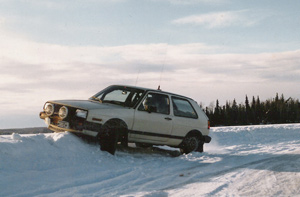
To accomplish this takes the epitome of concentration. In one road race, I missed a shift and could not find a gear, any gear. I practically stopped dead, the entire field left me in their dust. Something inside me centered. It was almost a physical sensation. I grabbed a gear and stomped on the accelerator up a long straight. I heard John in my head, "You are either on the brake or on the throttle, no coasting." The first turn, a sweeping left loomed. Every visual signal is screaming to slow down. Discipline, confidence in yourself and the car and sheer guts scream louder. "Don't brake. Don't brake. Don't brake. B-R-E-A-K !!!! I careen around the turn in a four wheel drift, accelerating to the next set of curves.
Because of my ability to block out distraction and doubt when racing, I could enter into the zone, a form of meditation, oblivious to all except the task at hand, car an extension of my hands and legs as I mashed the pedals and shifted gears time after time to the rhythm of the turns in the track. One by one I caught and passed each car, the last one on the last lap to win the race.
It sometimes seems weird that I can compare my spiritual life to racing. But through concentration and mediation, one by one, I strive to catch and pass life's difficulties.
I believe that those who participate in so-called "extreme" sports are all meditators. To survive, these athletes must be able to concentrate to the point of an integrated meditation of the body-mind-emotion state. In other words, what they do is natural, not extreme at all.
Perhaps you do not put car racing into the category of extreme sports. Well, neither do I. Did it have an element of danger? Absolutely. Did it require me to go beyond myself? You bet. Did I ever see my life pass before me during an event? No, but I should have. Car racing was natural, just a part of me and what I did well.
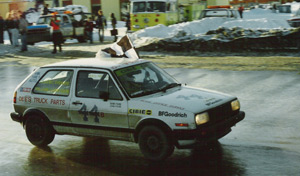
Palyati Fouse
Alaska, USA
Transcend the horizon of the ordinary. Capture the future and lasso it into today's experience. The appeal of extreme sports and adventure is at least in part the adrenaline rush of newness inherent inside moments such as these. Whether running long distances, climbing steep peaks or executing a somersault dive out of an airplane, a firm handshake with the unknown accompanies these achievements. As one goes beyond the boundaries of the expected, change also integrates into everyday life. If we venture into this new territory, we needs must embrace change as well.
Mirroring this aspect of adventure and sport, an openness to change is a key precept in spiritual transformation as well. If one's life is not already consciously immersed in divinity, reaching this state involves leaving behind one's past. Spiritual teacher Sri Chinmoy explains in the following poem:
You have to voyage
From the familiar to the unfamiliar,
From the known to the Unknown,
From the knowable to the Unknowable
Indeed,
This is the God-ordained way.
-Sri Chinmoy
Twenty-Seven Thousand Aspiration-Plants, Part 60, no. 5919
Because I do hunger for increased proximity to God's realm of peace, light and serenity, I am quick to at least sign my name on the dotted line for some sideline cheering activity. Why sideline? Because the value of change and the unknown is all well and good while I am safely ensconced on the mountaintop amidst the ethereal altitude of theoretical reality. Remove the word theoretical from the previous sentence and all bets are off.
As someone who averages about eight hours to jog (or should I add "walk" as well) a marathon, I am also more likely to be found among the ranks of those who resist change with plaintive laments. In fact, rather than sprinting into change's domain, I'm more the type to wish beginner's luck could just coast on forever.
By way of example, I remember my excitement in the newfound hobby of photography a couple of years ago. I had never studied the subject and was not versed in even its most basic tenets. Spoiled by the instant feedback of a digital camera, I shunned the discipline of learning about aperture, white balance and ISO. Instead I depended more on beginner's luck and the user's manual that didn't come with the camera. The crib notes were scribbled on the back of dust specks dancing in the sunlight's rays. They were in the bird call that sent my eyes searching until the cardinal red signaled through the bare trees across the street. They were in the newfound habit of acute awareness of each day's sunrise and sunset time. And they were not in the discipline of learning more about the subject in books or editing software.
Now almost two years later, I hesitate on the cusp of matriculation. I knew I couldn't cloister in the beginner's abode any longer when I carefully analyzed the cactus wren as it perched on the agave stalk in Arizona. I was able to stand quite close to the bird and varied my angle again and again while studying how the altered position affected the background of the photo. Then I narrowed in on combating the shadow coming from the stalk itself which partially cloaked the bird's body. As I observed my methodical approach to taking this photograph, I couldn't deny a much increased sense of discrimination as compared to my early days photographing birds.
Despite this evolving process, I have yet to push off completely into the unfamiliar. Typical of my attitude towards change, I am reluctant to part with my slightly broken camera because its presence in my life for two years has been like a beloved companion. I know that I should embrace change and the unknown with a more sophisticated camera but have yet to do it.


This story is my confessional example of my manner as a creature of habit. I doubt I am alone in this tendency. Within management circles, great attention is devoted to "change management" and how to overcome resistance to change by individuals within an organization. Currently in the midst of massive changes at my place of employment, I have to remind myself that some tasks that involve great lengths to revise will eventually hold at least a glimmer of promised improvement in the days ahead.
Perhaps I can best befriend the threshold of change by turning once again to spiritual teacher Sri Chinmoy's sage advice. He often emphasizes the need for gradual progress and transcendence. He writes in the book Warriors of the Inner World,
"So, do not be afraid of the unknown. Today it may remain unknown, but tomorrow it will be known. When a child is in kindergarten, primary school will be unknown to him. But in one year, the same child will go to primary school. Then he will see that there is nothing strange, nothing wrong in it. It is all gradual progress. The unknown is something waiting for us; only we have to welcome it. But if we don't pray and meditate, then we will not feel that the unknown is encouraging and illumining."
With this approach, my prayer and meditation practice can ease resistance to change and open the possibility to integrating the satisfaction found inside moments of transcendent action. Lasting change is often the incremental variety so do follow the call of gradual progress even when jumping on the adventure bandwagon.
And add the guidance of a spiritual teacher for the secret of secrets. Have you ever heard a concert of change ringing bell music? With the effort to coax forth one's divine source and to lessen the ravages of suffering, a spiritual teacher could be likened to a change ringer. The guru assists his or her students in how to change the prevailing winds of their lives until a mellifluous melody emanates from the bells of humanity's church steeple. Drawing on this inner guidance, even this creature of habit can inch towards tomorrow's dream inside the heart of today until my own progress peals like a bell with crystal clarity.
Sharani RobinsRhode Island, USA
Twelve stalwart individuals toed the line at the start of this ‘extreme' footrace in June of 2004. I happened to be one of them. How I ended up on that starting line is a long story as we each had our own personal journeys to get to the starting line together. What happened before this point is not relevant to the story of this incredible odyssey. But what happened next is quite relevant to the subject of extreme sports.
As we contemplated the task that awaited us all I felt as if we were part of a team rather than just competitors in a race against each other. In this particular extreme footrace you try to cover as many miles a day as you can on foot, either running, jogging or walking. The pace is not important as long as you can average enough miles per day to finish in the allotted 60 days or less. Everyone has to be at the starting line each day by 6:00 a.m. and no one runs between midnight and 6 a.m. This ensures us that we get a decent rest period every night. Most people want to try and finish in less than 52 days which is an average of about 60 miles per day. These numbers are what make this race seem ‘extreme' to most people.
Relatively speaking, a sprinter may consider a one-mile race as extreme. To a miler a marathon of 26.2 miles or 42 kilometers is extreme. A marathoner may consider an ultramarathon extreme. A multiday race is extreme to most ultramarathoners and the 3100 mile multiday race may be considered as the most extreme, even to the seasoned multiday runner. So this race has all the qualifications of ‘extreme' running that just about any runner and non-runner alike can imagine.
Many may ask, "Why go to the extreme in anything? What is wrong with moderation, the middle path?" In normal life that is a good philosophy. To take on challenges that seem impossible but have even a shred of possibility seems to be an element of human nature that has demonstrated itself throughout history. Climbing the tallest, death-defying mountains or swimming the long and cold channels and straits as well as any other extreme activity always attracts at least a few brave, eccentric or ‘crazy' individuals. No exception was this particular 3100 mile race which has been happening annually for ten years now.
Although we called this an extreme race because of the time element, distance and the ensuing competitive challenge, I felt that it was more like a personal odyssey, a journey into the unknown. As in anything challenging in life, especially in extreme situations, faith in oneself is quite indispensable. I spent many years as a volunteer helper in this race in many capacities always with the feeling that I would like to try it but lacked the faith in myself to do so. Or perhaps I could not face the fear I had for this extreme challenge even though I knew I was as qualified as most of the runners who had done it.
I finally faced and challenged this fear through the encouragement of the founder of this race, Sri Chinmoy, who has inspired countless individuals for decades in the pursuit of self-improvement through sports and other creative and spiritual fields of endeavor. Knowing that I had the qualifications and capacity to attempt and even finish this race, in 2003 Sri Chinmoy lovingly encouraged me to prepare for it for the next year, 2004. His faith in me strengthened my faith in myself and gave me the capacity to overcome the most daunting obstacle in my attempt to challenge myself: fear.
Once the starting buzzer sounds the challenges just keep on coming, mile after mile and day after day. The extreme element in this particular race is in the distance. But the pace and the moment to moment experience is quite slow, peaceful and contemplative. The main challenge is to develop and maintain the patience and perseverance to go beyond mental doubts, fears and even a sense of boredom. One must focus on positive thoughts and a constantly renewable energy as you put one foot in front of the other in a rhythmical and mantra-like fashion.
Time and distance, which may at first seem like the enemy, eventually become your friend as you try to transcend relative time and space. To cover such an extreme distance I found that thinking of the ultimate goal of 3100 miles is of no avail on a moment to moment basis. Short term goals that are realistic should be the point of focus as you slowly cover the distance minute by minute and hour by hour. The ancient spiritual wisdom of ‘being in the moment' became very necessary and real to us in this extreme event. When I thought of the miles I had to do each day I would focus on how many laps I will cover in the next hour or how long it will take to do just the present one half-mile lap.
As in life and in the Universe itself, step by step and lap by lap the process continues. I often thought of the moon revolving around the earth and the earth revolving around the sun. Billions of years this has been going on and on, circles and circles, around and around. Try to decipher this ever present reality logically and it is difficult to fathom. If the moon had a mind to think about how long it has been revolving around the earth and how far it has traveled it would probably ‘freak out' by the extreme nature of the time and distance and the fact that it does not even seem to be going anywhere.
What we were attempting was far less daunting than anything we see in the Universe around us, yet we are still part of this Universe and its all-embracing principles. Trying to feel oneness with these principles and this Universal energy instead of feeling separate because of our lack of mental understanding, I began to feel more energy and open up to deep sources of energy and peace within myself. I am sure this is a process and experience that many people who attempt extreme sports or other activities eventually end up having in one way or another.


Even when the energy is high and the mind is peaceful, there still is the ever-present reality of the body and its limitations. Pain and even injury can enter into the game and one has to deal with that as we have to keep on moving with very little rest time in order to reach the goal. No one wants to suffer or create dangerous situations to their health so we had a very good medical staff and kept up on all physical maladies that may arise. Even though there were some injuries including my own during the experience, there were no serious enough or life-threatening injuries which kept anyone from trying to finish the race to the end.
Dealing with my own pain and injuries, I took the advice of Sri Chinmoy who was concerned when I felt as if I had to drop out after less than two weeks with a painful ‘shin splint' which only really hurts when running. He told me to walk and not to worry about the miles and just to be happy.
‘Being happy' sounds like simple and easy advice that is a common greeting in everyday life. But it is a reality which goes very deep into the spiritual and psychic core of the individual. Perhaps the moon can keep up the pace and distance because it is happy doing so. Not have to use a logical mind, happiness is a natural state of universal energy which keeps renewing and strengthening itself, allowing what seems at first to be ‘extreme' just to be something quite natural and acceptable. I personally worked quite hard on this concept of ‘being happy' that Sri Chinmoy suggested and the dividends paid off ‘extremely' well.
As a runner for over 30 years, just walking for long distances was not very appealing to me. But with my injury plaguing me and limiting me to just walking, I had no choice and I had to accept this fact and be happy at the same time. This experience lasted over one week, walking and walking, powerfully and dynamically. It kept me in the race enough to keep the hope alive that I could still finish the distance once I could start to run again.
Sometime after passing the 1,000 mile mark and still having almost 2,000 miles to go, I started running again. My injury was healed! But more importantly my mind was healed in a very real and practical way thanks to the wisdom and advice of Sri Chinmoy. Remaining happy while staying in the race while walking and walking and walking not only helped my body to heal its injury, but it also renewed my enthusiasm for being in the race and eventually being able to run.
The first time I was successful at running a whole lap again and then lap after lap with no more shin pain, I felt like a child discovering new worlds. I was so happy and grateful that I could run and run and run. The following week I had the highest daily mileage than all the other runners in the race! Needless to say I did eventually finish the race in just over 51 days and placed 5th which was ‘extremely' satisfying to me.
Before the injury there was tremendous mental pressure and resistance to run and run around and around all day long, day after day. I was not happy and my mind was an obstacle and limited my ability to do what mentally is defined as something extreme. The word ‘extreme' itself seems to inaccurately define and limit experiences which are natural, real and inevitable in the life of this infinite Universe. Some of the experiences in this so called ‘extreme' race actually taught me in a very convincing manner how to go beyond the definition of ‘extreme' itself.
Many other experiences in this race as well as other sporting events can be labeled as ‘extreme'. Doing that just seems to satisfy our minds' inability to fathom the infinite nature of our own limitless life in this infinite Universe. In order to deal with the practical side of life, the human physical and mental dimensions that we experience in limited fashion, we label events and experiences as hard, easy, long, short, extreme and so on.
To plumb the depths of the reality beyond the limiting words and concepts, we must conquer the fear of failure and of our mental misconceptions which limit our experience of this vast Universe. Extreme sporting events seem to offer the opportunity and the necessary support to those who are willing to take on that challenge and go beyond themselves, beyond the limited and limiting mind.
To sum up the essence of the experiences that I and others may have had in ‘extreme' sporting events such as the 3100 mile race, I refer to these simple yet powerfully meaningful words of Sri Chinmoy, the founder of this event and many other Self-Transcendence events: "Run! You can easily challenge the pride of frightening distance."
Extremely grateful,
Arpan DeAngelo
New York, USA
Our members
Stories
First-hand experiences of meditation and spirituality.

In the Whirlwind of Life
Pradeep Hoogakker The Hague, Netherlands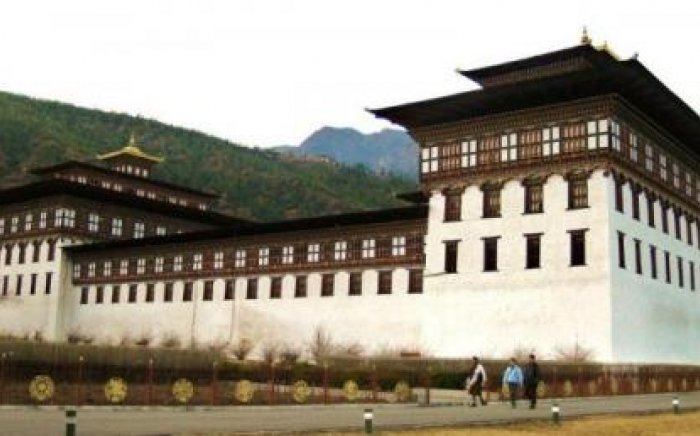
Bhutan, A Country Less Travelled...
Ambarish Keenan Dublin, Ireland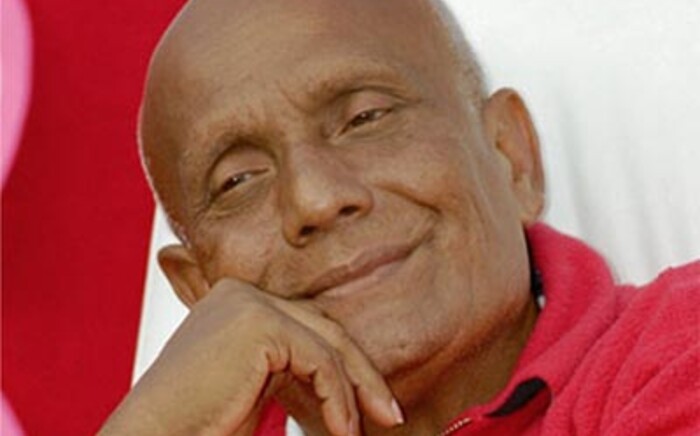
Having a Spiritual Teacher
Preetidutta Thorpe Auckland, New Zealand
President Gorbachev: a special soul brought down for a special reason
Mridanga Spencer Ipswich, United Kingdom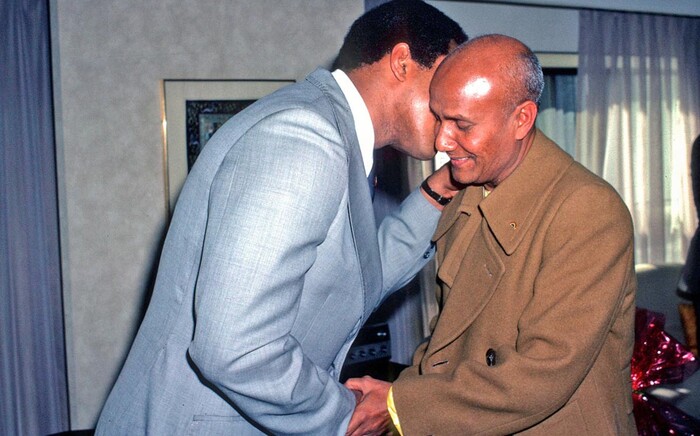
Muhammad Ali: I was expecting a monster, but I found a lamb
Sevananda Padilla San Juan, Puerto Rico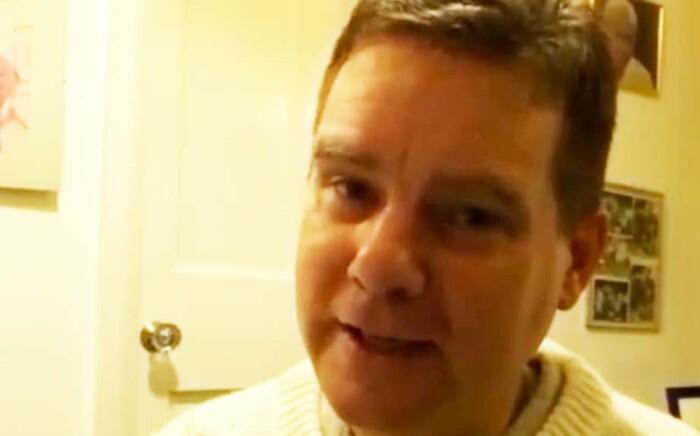
'I could find out myself, but it was so much easier asking your soul'
Mridanga Spencer Ipswich, United Kingdom
If I can smile like that, it's worth becoming a disciple
Mahatapa Palit New York, United States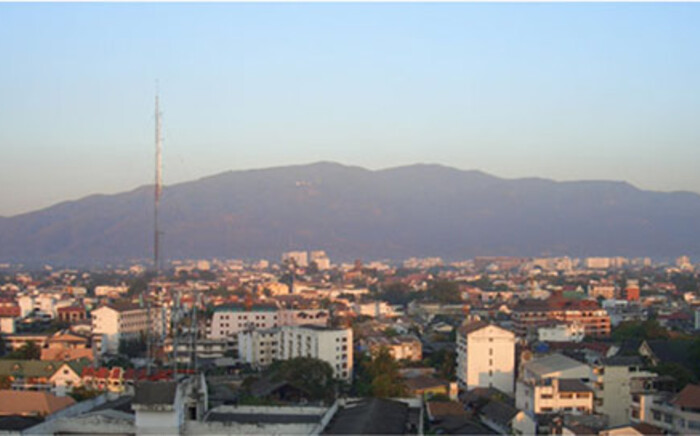
A Mountain Meditation
Jogyata Dallas Auckland, New Zealand
My Life with Sri Chinmoy: a book
Tejvan Pettinger Oxford, United Kingdom
My first Guru
Adarini Inkei Geneva, Switzerland
Akuti: a pioneer-jewel in our Centre
Akuti Eisamann Connecticut, United States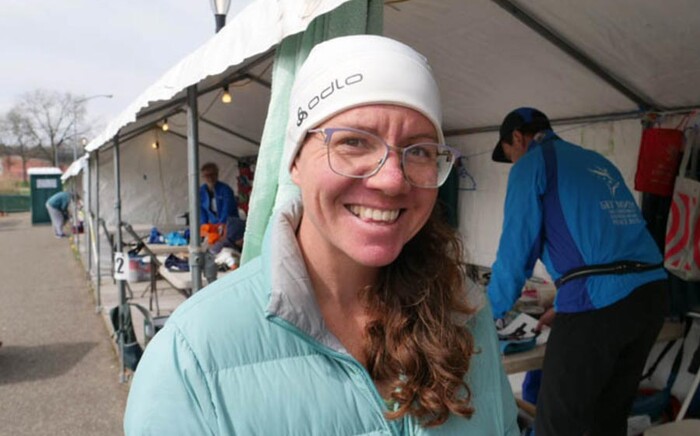
Believe, take a step and proceed: a 6-day race experience
Susan Marshall ,Suggested videos
interviews with Sri Chinmoy's students
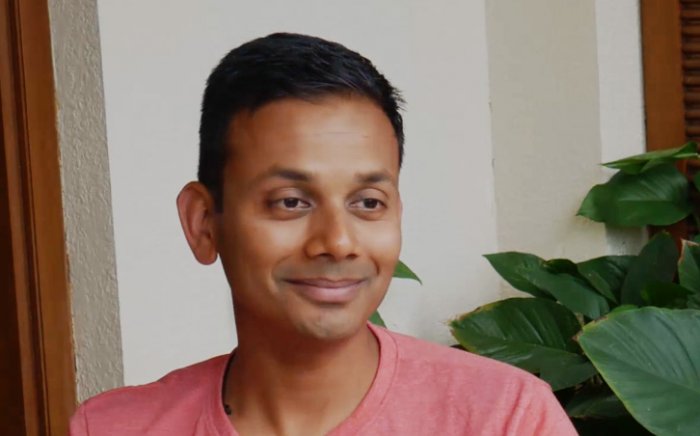
My favourite part of Sri Chinmoy's path
Muslim Badami Auckland, New Zealand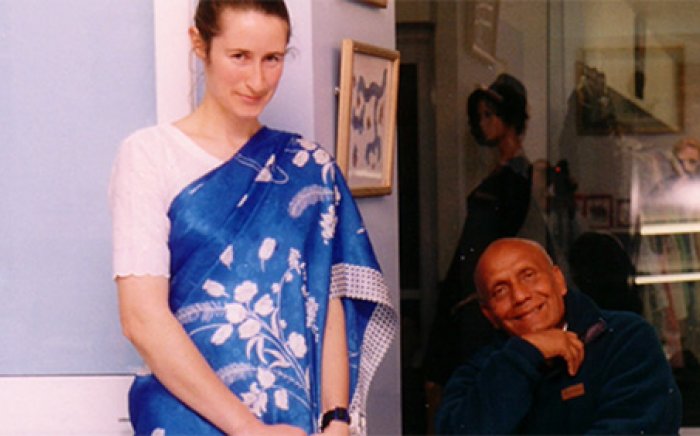
Humorous moments with Sri Chinmoy
Toshala Elliott Auckland, New Zealand
How can we create harmony in the world?
Baridhi Yonchev Sofia, Bulgaria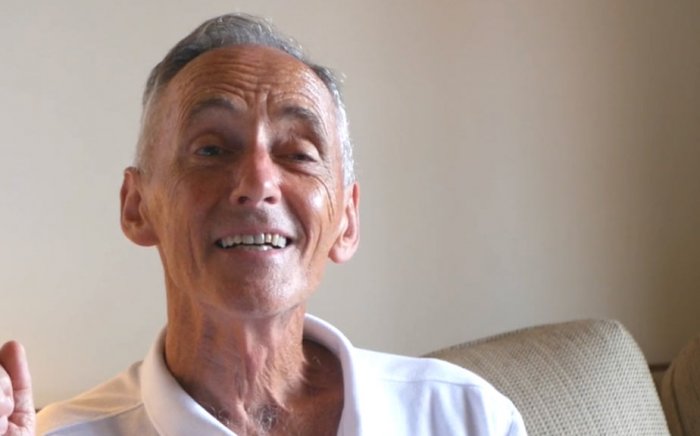
An airport meditation experience
Jogyata Dallas Auckland, New Zealand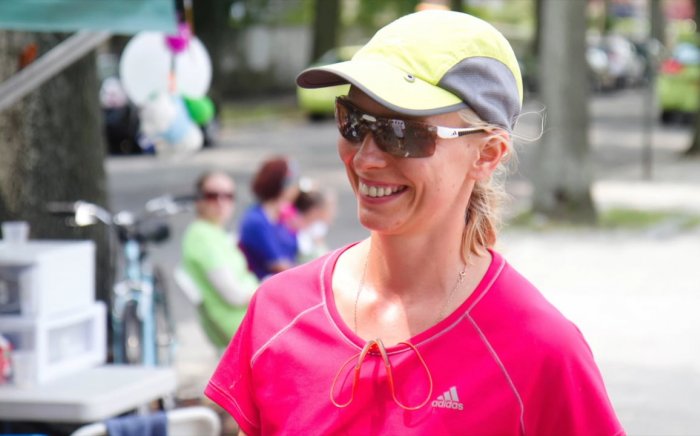
Running the world's longest race
Jayasalini Abramovskikh Moscow, Russia
My first impressions of Sri Chinmoy's philosophy
Lunthita Duthely Hialeah, United States
Except where explicitly stated otherwise, the contents of this site are licensed under a Creative Commons Attribution-NonCommercial-NoDerivs 3.0 Unported License. read more »
SriChinmoyCentre.org is a Vasudeva Server project.












